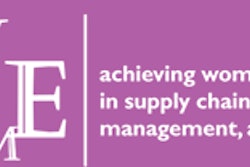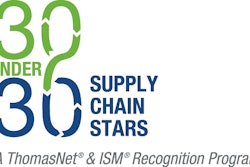
Picture yourself in the CEO’s corner office, asking: “How do we win in this fast-moving, technology-enabled and data-saturated world?” It’s a question that is top of mind for chief executives and boards of most companies. Back at your desk, the same question may become, “How do we manage to keep up in this fast-moving, technology-enabled and data-saturated world, let alone get ahead?” Not only is everything coming at a faster pace, it is super-sized in terms of volume and complexity—everything except for staffing levels, which are stuck at recessionary levels for most companies.
The traditional “people-process-technology” business model that we relied on for years eclipsed. It is too slow, and perhaps more importantly, disconnected from market realities. The time between opportunity and action collapsed to just a fraction of what it was a few years ago. By the time an opportunity is recognized, it is just about to pass by or is already picked up by a competitor. To keep up, supply chains are evolving to become fast-moving, technology-enabled and data-saturated.
Fast-moving because they sense and react to shifting market landscapes in days, instead of weeks or months; technology-enabled through cutting-edge software algorithms, previously for Wall Street; and data-saturated with supply chains immersed in oceans of data. The same data that contain the valuable information required to compete and win.
Supply chain data, and in particular retailer point of sale (POS), is the new frontier. The term “new” may seem counterintuitive since manufacturers used retailer data in one way or another for decades. At first, POS was used for business planning activities, such as market size and share analysis. More recently, customer planning teams embraced downstream data to gain targeted visibility of trade promotion initiatives, new product introductions and retail compliance.
For example, queries at specific locations can help identify phantom inventory or instances in which promotional displays fail to make it to the floor. Recognizing and responding to these types of store-level issues is valuable, but offers little in the way of competitive differentiation since it is commonplace.
The new frontier comes from using downstream data in operational planning. Demand-sensing solutions that integrate all retailer data and virtually any other data source to significantly improve forecast accuracy for all items, at all locations, all the time. Once integrated into the forecast, the benefits of an improved demand signal flow directly to all operational activities, including replenishment, production and materials all the way to supplier management.
The result is a true end-to-end value chain from cash register to supplier. Demand sensing is currently used by multinational manufacturers to plan more than $200 billion in goods across 160 countries, but it is not yet mainstream, so it offers companies a clear differentiator and a competitive advantage.
The challenge of using downstream data for operational planning is the sheer scale of data. Operational planning always required a lot of data, but yesterday’s data pale in comparison to what is available today. A decade ago, items stocked in 10 locations had 10 data points per month as inputs to forecasting. Today, daily retailer data from Walgreens alone represents roughly 3 million data points per month for the same item. That’s an astounding 300,000 times more data, from just one retailer.
Under the current business model, scaling to meet this need is a monumental task, requiring thousands of planners and statisticians. It is simply overwhelming and calls for a fundamental change in approach. Companies cannot “people and process” through this challenge. The only answer to data saturation is automation—and it is the technology enabler for the new frontier.
Gaining a competitive advantage in data-saturated markets through automation is a highly successful business model, creating trillions of dollars of value for the financial industry. Companies able to sort through masses of data and extract actionable information became huge financial winners. Rapid adoption by financial markets meant that automation quickly transitioned from being a competitive advantage to a competitive necessity.
By 2011, 73 percent of all equity trades on U.S. exchanges were automated. The same transformation is starting to take place in supply chain. While only about 5 percent of manufactured goods are planned with automation, it is rapidly growing. Just like the financial industry, the compelling economic drivers to automate supply chain planning means it is just a matter of time before most manufacturing volume is planned this way and today’s competitive advantage becomes a new competitive necessity.










